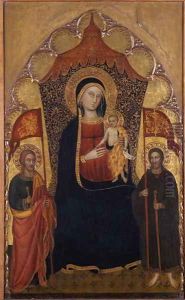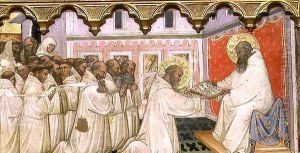Turino Vanni Paintings
Turino Vanni was an Italian painter active during the late 14th century, a period characterized by the Gothic style within the arts. Although not as widely recognized as some of his contemporaries, Vanni contributed to the rich tapestry of Italian medieval art and was part of the transition towards the early Renaissance. His exact birth and death dates are not well-documented, but he is believed to have been born around 1340 and to have died around 1400.
Vanni worked primarily in Tuscany, and his style is indicative of the Sienese School, which was one of the dominant streams of Gothic art in Italy. This school was known for its elegant and decorative style, with an emphasis on linear grace and refined color palettes. Turino Vanni's body of work suggests that he was influenced by other Sienese painters such as Simone Martini and the Lorenzetti brothers, who were known for their narrative frescoes and attention to detail.
Vanni's surviving works are relatively few, but they include altarpieces and panel paintings with religious subjects, which was typical of the time due to the church's patronage of the arts. One of his notable works is the 'Life of Saint Martin' series, which depicted the life of Saint Martin of Tours. These works are characteristic of the Sienese style because of their intricate ornamentation and use of vibrant colors.
Despite the scarcity of records regarding Vanni's life, it is evident that he was a respected artist in his time, as he received commissions from prominent religious institutions. His contributions to art are significant in that they reflect the stylistic trends and religious fervor of the late medieval period in Italy. Turino Vanni's legacy is preserved in the works that survive him and in the influence he had on the generations of artists who were transitioning toward a more human-centered and naturalistic approach to art, which would fully flourish during the Renaissance.

